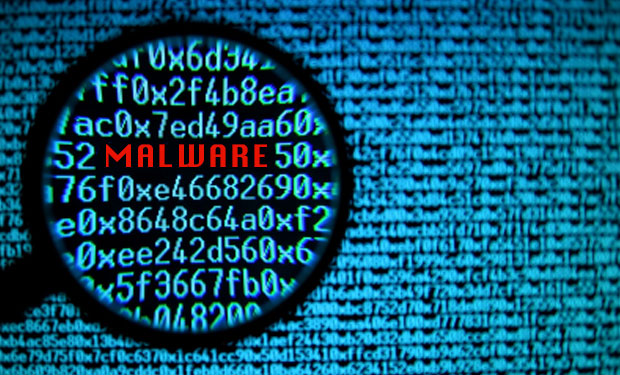Abstract
Malware, a global threat in the digital age, has evolved from simple viruses to complex tools capable of targeting individuals, organizations, and critical infrastructure. This article explores the different types of malware, their mechanisms, and the increasing trends of attacks enabled by advances in artificial intelligence and automation. It highlights the role of digital forensics in analyzing, mitigating, and preventing malware incidents while addressing challenges such as attribution and response. Current trends, including fileless malware, ransomware, and IoT attacks, highlight the dynamic nature of this threat. The paper also elaborate future malware trends and the legal challenges in combating this cybercrime, highlighting the need for international cooperation, innovative defenses and a proactive approach to ensuring future digital security.
Introduction
Malware, a collection of “malicious programs,” has become an inevitable and ever-growing threat in the computer age. As the foundations of modern life become increasingly computerized, the potential dangers posed by malware are ever-increasing. From compromising personal data to shutting down core systems, the effects of malware are endless and far-reaching, making it a central topic for understanding and combating cybersecurity. Over time, however, it has become a modern weapon for cybercriminals, state-sponsored actors, and attackers. Today’s malware is not limited to basic infections or worms, but also includes ransomware, spyware, Trojans, and advanced persistent threats (APTs), each with its own characteristics and attack methods. The proliferation of malware is fueled by advances in innovation, including fake news, machine learning, and computerization, which have made cyberattacks more effective and harder to identify.
For example, the Internet of Things (IoT) has introduced millions of poorly secured devices into the environment, which are prime targets for malware attacks. In addition to financial woes, malware can also lead to the compromise of sensitive data, theft of intellectual property, and a breakdown in trust in IT systems.
In some cases, the consequences of malware attacks are severe, such as when clinical systems are paralyzed, delaying basic healthcare. On the other hand, modern malware is designed to avoid detection through techniques such as polymorphism, encryption, and stealth.
For example, polymorphic malware changes its code with each infection, making it difficult for traditional antivirus programs to detect. State-sponsored malware has also become a tool for geopolitical influence and cyberwarfare. This development highlights the use of malware as a criminal tool and as a weapon by the state. Cybersecurity professionals rely on tools such as artificial intelligence, machine learning, and behavioral analytics to detect and respond to threats in real time.
Evolution of malware
1. First generation - Simple viruses (1970s-1980s) - Early malware was crude and infected mainly standalone systems.
For example: The Creeper virus (1971) is often considered the first virus, created experimentally on the ARPANET. It displays the message “I am an information collector, catch me if you can!”
Features: These viruses are limited in scope, infecting mainly files or systems without significant replication mechanisms.
2. Second generation - Network-based worms (1990s) - With the development of the Internet, malware shifted from file-based attacks to network-based attacks.
For example - the Morris Worm (1988), the first Internet worm, caused widespread disruption by exploiting vulnerabilities in UNIX systems.
Features: Worms can replicate and spread across networks without user intervention.
3. Third Generation - Polymorphic and Stealthy Malware (2000s) - As antivirus solutions improved, malware became more complex. Polymorphic malware can modify its code to avoid detection.
For example - the Storm Worm (2007) used email phishing tactics and evaded traditional antivirus solutions.
Feature: The malware used stealth techniques, such as encrypting its payload or hiding its processes, to avoid detection.
4. Fourth Generation - Advanced Persistent Threats (APTs) (2010s) - APTs target specific organizations or governments, often for espionage or sabotage purposes.
Example: Stuxnet (2010), a sophisticated worm designed to sabotage Iran's nuclear program.
Features: APTs involve well-funded, state-sponsored actors who use advanced malware and zero-day exploits to penetrate networks without being detected.
5. Generation Five - Artificial Intelligence and Ransomware as a Service (2020s) - The integration of AI and machine learning has created malware that can adapt in real time. Additionally, ransomware as a service (RaaS) has made it easier for non-technical criminals to launch attacks.
Example: Ryuk ransomware uses AI to identify high-value targets and maximize extortion efforts.
Features: Malware has become part of organized cybercrime, with tools being sold on dark web marketplaces.
Emerging Malware Trends
1. Fileless Malware - Fileless malware resides in memory and leaves no traces on disk, making detection more difficult. For example – W32 which leverages PowerShell to execute malicious code without writing files to disk.
2. IoT Malware - As IoT devices become more popular, they are becoming prime targets due to weak security protocols. For example - Mirai Botnet, which infected IoT devices to launch distributed denial of service (DDoS) attacks.
3. Deepfake malware - Using fake audio or video files generated by AI, attackers impersonate individuals for the purpose of phishing or extortion. For example - In 2020, a deepfake audio file impersonated a CEO, leading to fraudulent wire transfers.
4. Ransomware Evolution - Modern ransomware not only encrypts files but also exfiltrates data, threatening to leak sensitive information if demands are not met. Example: Maze Ransomware, known for its double extortion.
5. Supply chain attacks - Malware targets the software supply chain to infiltrate multiple organizations simultaneously. Example - SolarWinds attack (2020), which compromised updates to infiltrate government and corporate networks.
Forensic Response to Malware
When a malware attack occurs, it is essential to respond effectively to limit damage and collect evidence for investigation. Forensic response to malware involves systematically analyzing infected systems, identifying the type of malware, understanding its behavior, and investigating its origin. This process not only helps organizations recover from an attack, but also provides information to prevent future incidents. Forensic response begins with containment. Once malware is detected, it is essential to quarantine affected systems to prevent further spread. This may involve disconnecting the system from the network, disabling certain services, or switching to an offline backup. Containment ensures that damage is limited and evidence remains intact for forensic analysis.
After containment, forensic experts create digital images of the affected systems. This imaging process records all data, including active processes, registry entries, and network logs, in a state consistent with the time of the attack. The goal is to preserve evidence in a manner that is admissible in court should legal action be required. During this phase, it is important to follow a chain of custody process to ensure that the evidence remains intact and trustworthy. The analysis phase involves examining the malware to understand its functionality and impact. Static analysis examines the malware code, while dynamic analysis observes its behavior in a controlled environment, such as a sandbox. Forensics experts often deconstruct the malware to determine its algorithm, triggers, and payload. Tools such as Wireshark are used to analyze network traffic, revealing communication patterns with command-and-control (C2) servers. Behavioral analysis also reveals indicators of compromise (IOCs), such as specific file paths or registry changes, that can help detect similar threats in the future.
A key aspect of forensic response is attribution, which involves tracing the source of the malware. This is a complex process that requires the collection of evidence, such as IP addresses used for communication, timestamps, and even language patterns in the malware code. Advanced techniques, such as AI-based analysis and threat intelligence, help link findings to known threat actors. While attribution is not always conclusive, it provides valuable information to support legal proceedings or defense strategies. Once the analysis is complete, the remediation process begins. This includes removing the malware, fixing vulnerabilities, and restoring affected systems. Documenting the forensic investigation is essential for future compliance and learning. The final step is to strengthen the defense by implementing lessons learned, updating the incident response plan, and training employees to recognize incidents.
Malware Prevention Techniques
• Regularly monitor networks and systems using intrusion detection systems (IDS) and endpoint detection tools. • Educate employees on how to recognize phishing attempts and maintain good cybersecurity hygiene.
• Ensure all software and hardware are updated to minimize vulnerabilities.
• Maintain regular backups to restore data in the event of a ransomware attack.
• Implement security policies that verify every access request, even from within the network.
The Future of Malware
The future of malware is set to become even more complex and challenging as cybercriminals leverage advanced technologies such as artificial intelligence (AI), machine learning, and automation. Malware is likely to evolve into more complex forms, including polymorphic and metamorphic malware that can continuously modify its code to avoid detection. Fileless malware, which runs directly in system memory and leaves no trace on disk, is also expected to evolve, making it even harder for traditional antivirus programs to detect. Additionally, with the expansion of the Internet of Things (IoT) and smart devices, malware targeting these connected systems will increase, exploiting weak security configurations and outdated firmware. Cybercriminals are also expected to use AI to create malware with adaptive attack capabilities, allowing them to identify and exploit specific vulnerabilities in real time. These advances will challenge even the most robust cybersecurity measures, requiring continued innovation and proactive defense.
Legal Challenges in Combating Malware
The legal landscape surrounding malware presents significant challenges due to its global and dynamic nature. Malware attacks often originate from different jurisdictions, making it difficult to investigate, attribute, and prosecute cybercrime within existing legal frameworks. Laws governing cybercrime vary widely from country to country, and a lack of international cooperation can hinder efforts to effectively combat malware. In addition, the anonymity provided by technologies such as encryption and the dark web makes it difficult to identify and hold perpetrators accountable. New forms of malware, such as ransomware as a service, blur the lines of legal liability because developers and distributors do not necessarily carry out attacks. In addition, issues such as data privacy laws and the ethical use of surveillance tools can complicate investigations. Addressing these legal challenges requires increased international cooperation, harmonization of cybersecurity laws, and the development of policies that balance privacy and individual rights to ensure a consistent and effective response to the growing malware threat.
Conclusion
In an ever-changing digital landscape, malware remains one of the most pervasive and dangerous threats to cybersecurity. From simple viruses to complex state-sponsored attacks, malware has demonstrated its ability to compromise sensitive information, disrupt critical infrastructure, and cause significant financial and reputational damage to individuals and organizations. The rapid pace of technological advancement has facilitated the emergence of new malware variants and provided defenders with tools to combat them, creating a constant arms race between attackers and cybersecurity professionals. By systematically analyzing malware behavior, identifying its source, and detecting it, forensic scientists provide valuable information that informs immediate response efforts and long-term security strategies. In short, combating malware is an ongoing battle that requires a combination of advanced technology, skilled expertise, and proactive thinking. Integrating digital forensics into a cybersecurity strategy is essential to understanding and mitigating the impact of malware attacks. By prioritizing prevention and response, together we can reduce the impact of malware and build a safer digital future for individuals, businesses, and societies around the world.

